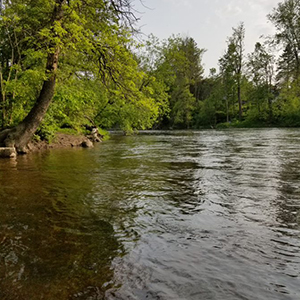Water chemistry and periphyton biomass in the Rideau River: Have conditions changed after 24 years?

All claims expressed in this article are solely those of the authors and do not necessarily represent those of their affiliated organizations, or those of the publisher, the editors and the reviewers. Any product that may be evaluated in this article or claim that may be made by its manufacturer is not guaranteed or endorsed by the publisher.
Authors
Over the past three decades, the Rideau River (Ontario, Canada) watershed has experienced a land-use change from rural and agricultural land towards urban land, and the introduction and expansion of invasive species. This study examined spatial and temporal patterns of periphyton biomass (chlorophyll-a and ash-free dry mass) collected from riffle zones in 1995 and 2019 along a 66-km stretch of the Rideau River. This study also examined long-term changes in water nutrient and chloride concentrations collected through the Provincial Water Quality Monitoring Network between 2000 and 2018. Declines in total nitrogen between 2000 and 2018 occurred in areas that have not experienced urbanization since the 2000s. In contrast, declines in total phosphorus and increases in chloride between 2000 and 2018 occurred at midstream and downstream sites that have undergone urbanization during the same time period. Conductivity also showed an increase with distance downstream similarly in both 1995 and 2019. Average total phosphorus and total Kjeldahl nitrogen concentrations were lower in 2019 compared to 1995 but did not increase with distance downstream as seen in many river systems, including the Rideau River, in earlier years. Periphyton biomass did not change along the length of the river between 1995 and 2019, despite the declines in nutrient concentrations. These findings highlight the persistence of riverine periphyton in a multi-use watershed experiencing ongoing anthropogenic changes.
Edited by
Mariano Bresciani, CNR-IREA Milan, ItalyHow to Cite

This work is licensed under a Creative Commons Attribution-NonCommercial 4.0 International License.






